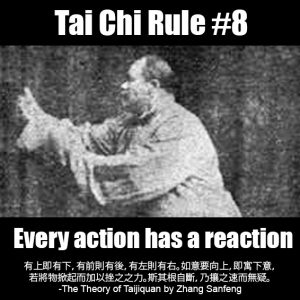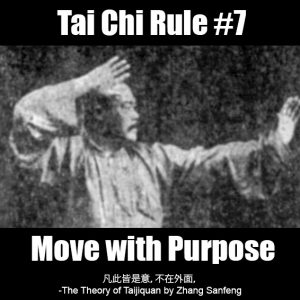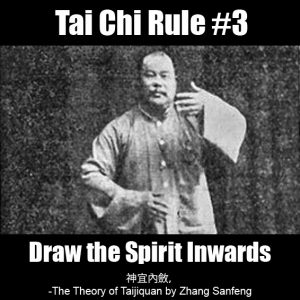If there is up there is down. If there is left there is right. If there is forward there is back.
有上即有下,有前則有後,有左則有右。如意要向上,即寓下意,若將物掀起而加以挫之之力。斯其根自斷,乃攘之速而無疑。
– The Theory of Taijiquan by Zhang Sanfeng

In Tai Chi we are constantly combining things that appear to contradict each other.
In doing so we find that what appears to be a contradiction is in fact two sides of the same coin and one cannot exist without the other.
You step forward by pushing backward with your foot. To push to the right you must apply force to the left.
The common analogy is a tree. The taller the tree the larger the root system required to support it. The larger the root system is the bigger the top must be to collect enough sunlight to nourish the roots.
Instead of trying to throw an opponent where they are strong, you can attack their support and they will fall all on their own.
Solo Exercise
Do the Yi intention exercises from Rule 7. Fill the 3 foot radius around you with Yi and when you step to the left make sure that the right side remains full the entire time. Don’t let the Yi shift to the left with your step.
Work on this with all your Tai Chi movement and make sure that you are filling the whole space the entire time.
You can also play with the Yi Leads the Movement Drill.
Instead of letting the Yi move ahead of where you are going, let it move in the opposite direction.
While working on rule 7 you might of thought of Yi as a magnet that pulls your body towards it. Now switch that polarity in your mind and think of Yi as a magnet that pushes your body away from it.
So if you wish to step forward the Yi shifts behind you and pushes you away from it.

